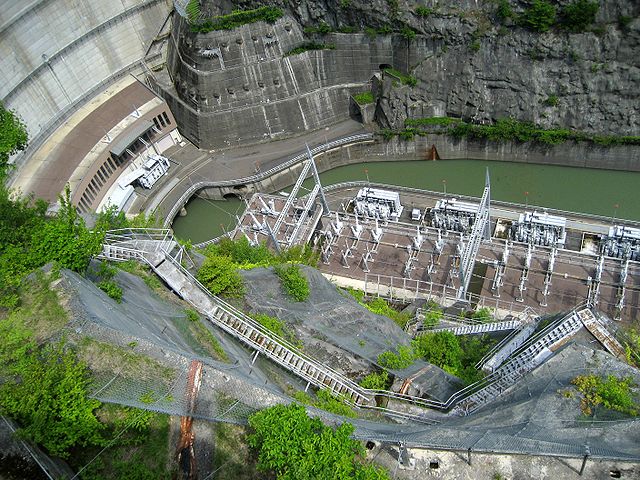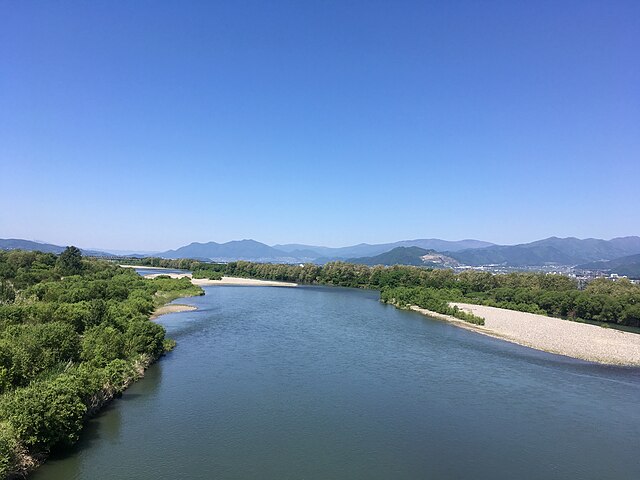The Azusa River is a river within the Hida Mountains or Northern Japanese Alps, in the western region of Nagano Prefecture, Japan. The river belongs to the Shinano River watershed, and forms the upper section of the Sai River. The name of the river comes from the catalpa tree found in the river basin, which are used for Azusa Yumi, a sacred bow in Shinto rituals. The river gives its name to the Azusa limited express train, which is operated by the East Japan Railway Company, and which runs mainly between Shinjuku Station in Tokyo and Matsumoto Station in Nagano.
Azusa river and Mount Hotakadake as seen from Kamikōchi
Rte 158 runs across Nagawado Dam, with manmade Azusa Lake on the left
Azumi Power Station at the Nagawado Dam
The Shinano River , known as the Chikuma River in its upper reaches, is the longest and widest river in Japan and the third largest by basin area. It is located in northeastern Honshu, rising in the Japanese Alps and flowing generally northeast through Nagano and Niigata Prefectures before emptying into the Sea of Japan. It is designated as a Class A river.
The Shinano River in Niigata just before it flows into the Sea of Japan
Flame-style pottery from the Nagaoka site
Chikuma River, from Yashima Bridge, looking downstream toward Murayama Bridge, Nagano (city)
Shinano River and Ōkōzu Channel in Echigo Plain in winter







